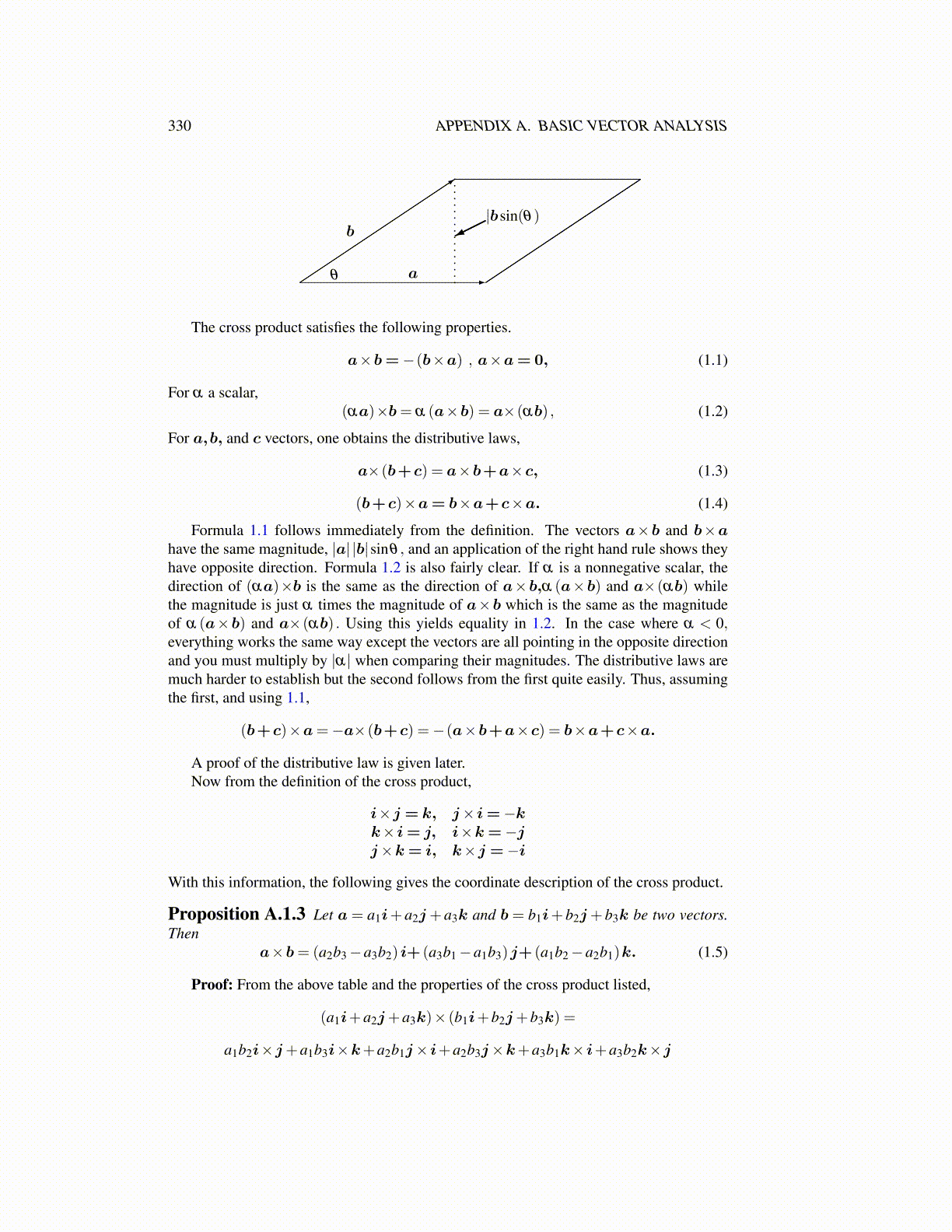
330 APPENDIX A. BASIC VECTOR ANALYSIS
b
aθ
|bsin(θ)
The cross product satisfies the following properties.
a×b=−(b×a) , a×a= 0, (1.1)
For α a scalar,(αa)×b= α (a×b) = a×(αb) , (1.2)
For a,b, and c vectors, one obtains the distributive laws,
a×(b+c) = a×b+a×c, (1.3)
(b+c)×a= b×a+c×a. (1.4)
Formula 1.1 follows immediately from the definition. The vectors a×b and b×ahave the same magnitude, |a| |b|sinθ , and an application of the right hand rule shows theyhave opposite direction. Formula 1.2 is also fairly clear. If α is a nonnegative scalar, thedirection of (αa)×b is the same as the direction of a×b,α (a×b) and a×(αb) whilethe magnitude is just α times the magnitude of a×b which is the same as the magnitudeof α (a×b) and a×(αb) . Using this yields equality in 1.2. In the case where α < 0,everything works the same way except the vectors are all pointing in the opposite directionand you must multiply by |α| when comparing their magnitudes. The distributive laws aremuch harder to establish but the second follows from the first quite easily. Thus, assumingthe first, and using 1.1,
(b+c)×a=−a×(b+c) =−(a×b+a×c) = b×a+c×a.
A proof of the distributive law is given later.Now from the definition of the cross product,
i×j = k, j× i=−kk× i= j, i×k=−jj×k= i, k×j =−i
With this information, the following gives the coordinate description of the cross product.
Proposition A.1.3 Let a = a1i+ a2j+ a3k and b = b1i+ b2j+ b3k be two vectors.Then
a×b= (a2b3−a3b2) i+ (a3b1−a1b3)j+ (a1b2−a2b1)k. (1.5)
Proof: From the above table and the properties of the cross product listed,
(a1i+a2j+a3k)× (b1i+b2j+b3k) =
a1b2i×j+a1b3i×k+a2b1j× i+a2b3j×k+a3b1k× i+a3b2k×j